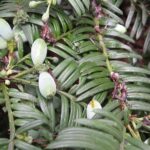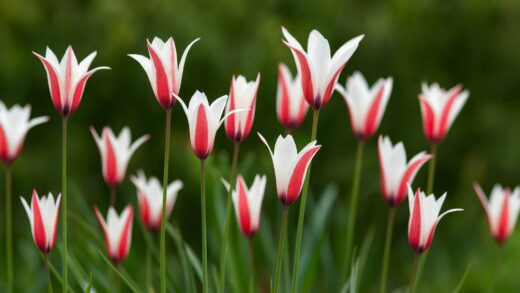To sustain its incredibly long and prolific blooming season, Bidens ferulifolia is a relatively heavy feeder that requires a consistent supply of nutrients throughout its active growth period. The constant production of new leaves, stems, and its signature golden flowers consumes a significant amount of energy, which must be replenished through regular fertilization. Providing a balanced diet is fundamental to achieving the lush, cascading display that makes this plant so popular. Without adequate nutrition, the plant’s growth may become stunted, the foliage may appear pale or yellow, and, most notably, the flower production will be significantly diminished, resulting in a sparse and lackluster appearance.
The foundation of good nutrition begins with the growing medium itself. Incorporating a slow-release, granular fertilizer into your potting mix or garden bed at the time of planting provides a baseline level of nutrients that the plant can access as it establishes itself. These fertilizers are designed to break down gradually over a period of several weeks or months, offering a steady, low-level supply of food. This initial application ensures that the young plant has the essential elements it needs to develop a strong root system and healthy initial foliage, setting a solid foundation for the demanding flowering season ahead.
However, for a plant that flowers as profusely as the gold of the balcony, a slow-release fertilizer alone is often not sufficient to meet its high nutritional demands, especially for plants grown in containers. The frequent watering required for container gardening tends to leach nutrients out of the soil over time. Therefore, supplementing with a liquid, water-soluble fertilizer is the most effective way to ensure the plant receives the consistent nourishment it needs to perform at its peak throughout the summer months.
The choice of fertilizer is important. A well-balanced formula, such as one with an N-P-K (Nitrogen-Phosphorus-Potassium) ratio of 20-20-20 or a similar balanced blend, is an excellent choice for regular feeding. Nitrogen supports healthy, green foliage growth, phosphorus is crucial for root development and flower production, and potassium contributes to overall plant vigor and resilience. Some gardeners prefer to use a ‘bloom booster’ formula with a higher phosphorus number (the middle number), but a balanced fertilizer is generally sufficient and promotes healthy growth in all aspects of the plant.
Understanding fertilizer types
When it comes to feeding your Bidens, you will encounter several different types of fertilizers, each with its own method of application and nutrient release rate. Liquid or water-soluble fertilizers are one of the most popular choices for container plants. These come in a concentrated liquid or powder form that is mixed with water and then applied during regular watering. Their primary advantage is that the nutrients are immediately available for the plant to absorb, making them perfect for providing a quick boost and for maintaining a consistent nutrient supply throughout the peak growing season.
More articles on this topic
Slow-release fertilizers, often appearing as small pellets or prills, are another excellent option, particularly for incorporating into the soil at planting time. These granules are coated with a semi-permeable material that breaks down at a controlled rate, releasing a small, steady amount of nutrients over an extended period, typically three to four months. This “feed it and forget it” approach provides a great nutritional baseline, but as mentioned, it may need to be supplemented with liquid feed during the most vigorous growth phases of a heavy feeder like Bidens.
Organic fertilizers, such as compost, well-rotted manure, fish emulsion, or worm castings, are also a fantastic way to nourish your plants. These materials not only supply essential nutrients but also improve the soil structure, enhance moisture retention, and encourage beneficial microbial activity in the soil. While their nutrient content can be more variable than synthetic fertilizers, they provide a slow, gentle release of nutrients and are an excellent choice for gardeners who prefer a more natural approach. A top-dressing of compost or mixing it into the potting soil can greatly benefit the plant’s long-term health.
It is important to understand that both synthetic and organic fertilizers can be effective, and the choice often comes down to personal preference and gardening philosophy. Many successful gardeners use an integrated approach, starting with a soil mix enriched with organic matter and a slow-release fertilizer, and then applying a water-soluble synthetic fertilizer as a supplement during the summer months to ensure the plant never lacks the fuel it needs for its spectacular floral marathon.
The fertilization schedule
Establishing a regular fertilization schedule is key to keeping the gold of the balcony in peak condition. The frequency of application depends largely on the type of fertilizer you are using. If you have incorporated a slow-release fertilizer into the soil at planting, a single application may be sufficient for the entire season, although a mid-season boost might be beneficial. However, if you are relying primarily on a water-soluble liquid fertilizer, a more frequent and consistent schedule is required.
More articles on this topic
For plants fed with liquid fertilizer, a common and effective schedule is to feed them once every one to two weeks during the period of active growth, which typically spans from late spring through late summer. This regular feeding ensures a constant supply of nutrients to fuel the continuous production of flowers. It is often beneficial to apply the fertilizer at half the strength recommended on the product label, but twice as often. This ‘weakly, weekly’ approach provides a very steady stream of nutrients and reduces the risk of fertilizer burn that can occur if a full-strength solution is applied to dry soil.
As the season progresses into autumn, the plant’s growth rate will naturally slow down in response to the shorter days and cooler temperatures. At this time, it is important to adjust your fertilization schedule accordingly. Reduce the frequency of feeding to once every three to four weeks, and then cease fertilizing altogether about a month before the first expected frost. Continuing to feed the plant heavily in the autumn can encourage a flush of new, tender growth that will be highly susceptible to damage from the first cold snap.
Always follow the instructions on the fertilizer packaging regarding dilution rates and application frequency, as different products have different concentrations. It is also a crucial rule of thumb to never apply fertilizer to dry soil. Water the plant thoroughly with plain water first, and then apply the fertilizer solution. This prevents the concentrated fertilizer salts from damaging the plant’s delicate roots and ensures the nutrients are distributed evenly throughout the root zone.
Recognizing nutrient deficiencies
A well-fed Bidens will have vibrant green foliage and a profusion of flowers, but if it is not receiving adequate nutrition, it will often display visible signs of a deficiency. One of the most common symptoms is chlorosis, or the yellowing of leaves. If the older, lower leaves are turning yellow while the new growth remains green, this is often an indication of a nitrogen deficiency. Nitrogen is a mobile nutrient, meaning the plant can move it from older tissues to support new growth, which is why the symptoms appear on the lower leaves first.
A lack of phosphorus, which is essential for energy transfer and flowering, can lead to stunted growth and poor bloom production. The foliage may also take on a dull, slightly purplish hue. This is less common in general potting mixes but can occur. If your plant appears healthy and green but simply refuses to produce a significant number of flowers, a phosphorus deficiency could be a contributing factor. Switching to a fertilizer with a higher middle number (P) may help to remedy this situation.
Potassium deficiency can manifest as yellowing or browning along the edges of the older leaves, while the center of the leaf remains green. Potassium is vital for overall plant health, regulating water movement and enzyme activation, and a lack of it can make the plant more susceptible to stress from drought, heat, or disease. A balanced fertilizer is typically sufficient to prevent this, but it is a sign to watch for if the plant seems to be struggling despite regular feeding.
It is important to note that symptoms like yellowing leaves can also be caused by other issues, such as overwatering or underwatering. Therefore, before you rush to add more fertilizer, always assess the overall growing conditions. Check the soil moisture and ensure the plant is receiving adequate sunlight. If all other conditions are optimal, then a nutrient deficiency is a likely culprit, and adjusting your fertilization routine should lead to a visible improvement in the plant’s health and appearance.
Avoiding over-fertilization
While feeding your gold of the balcony is crucial, it is also possible to be too generous, and over-fertilization can be just as harmful as a nutrient deficiency. Applying too much fertilizer, or applying it too frequently, can lead to a buildup of fertilizer salts in the soil. This creates a saline environment that can actually pull moisture out of the plant’s roots through osmosis, causing them to ‘burn’ and become damaged. The symptoms of fertilizer burn often include browning or blackening of the leaf tips and margins, wilting, and stunted or distorted new growth.
An excess of nitrogen, in particular, can be problematic. While nitrogen is essential for leafy growth, too much of it can stimulate the plant to produce an abundance of lush, green foliage at the expense of flowers. If you have a large, beautiful green Bidens plant with very few blooms, it is a strong indication that it may be receiving a fertilizer with too high a nitrogen ratio. To correct this, you would switch to a fertilizer with lower nitrogen and higher phosphorus content to encourage a shift from vegetative growth to flower production.
To prevent the harmful buildup of fertilizer salts in the soil of container-grown plants, it is a good practice to periodically flush the pot with plain water. Approximately once a month, take the container to a sink or an outdoor area and slowly pour a large volume of water through the potting mix, allowing it to drain freely out of the bottom. This leaching process helps to wash away the excess accumulated salts, effectively ‘resetting’ the soil and preventing the root zone from becoming toxic.
The key to successful fertilization is to follow a ‘less is more’ philosophy. It is always safer to slightly under-feed your plant than to over-feed it. Adhere to the recommended dilution rates on the product packaging, or even use a more diluted solution more frequently. By providing a consistent but not excessive supply of nutrients and by periodically flushing the soil, you can avoid the dangers of over-fertilization and ensure your plant remains healthy, balanced, and productive throughout the entire season.

















